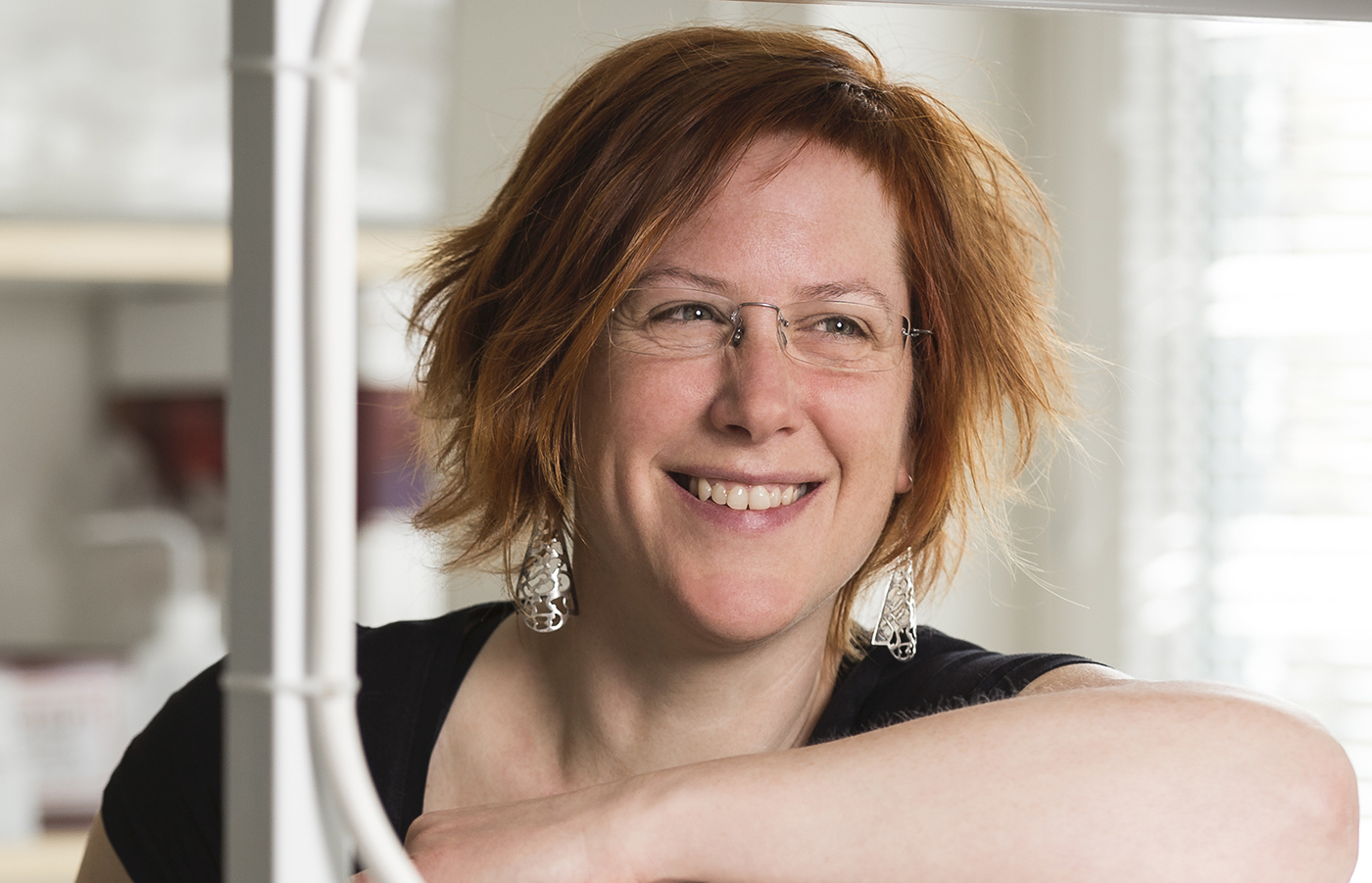- Startsida
- Languages
- English
- Swedish Board of Agriculture
- Animals
- The Swedish 3Rs Center
- News
- To reflect on my choice of methods
Publiceringsdatum18 November 2021
To reflect on my choice of methods
Joëlle Rüegg is Professor of Environmental Toxicology at Uppsala University. Her research is about hormone-disrupting substances and neurodevelopment. Joëlle develops new cell models to suit the specific issue in her research.

Joëlle Rüegg, toxicologist and researcher at Uppsala University.
— As a researcher using non-animal models, I have to reflect on which cell model to use to get a reliable result. For me, it is obvious to reflect on my methods and constantly try to develop new models that are better suited for the purpose.
Combinations of methods
One must remember that cell models in the early 2000s were simple, there were a few cancer cell lines available - and one used what was available in the lab. Today, we have come much further and develop new cell models. Joëlle describes her and her research group’s work at Uppsala University:
— We see the value of looking upon a research question by using the strength of different models, including animal models, and compare our experimental results with data from human studies. When we work together, it can provide insights that in the best case can be generalized, so that we do not have to use animals at all, says Joëlle.
— For example, we were able to demonstrate molecular changes in an in vitro model when we disrupted the function of the female hormone oestrogen. We were then able to link the same changes to prenatal exposure in rats and in humans using data from a mother-child study. We were also able to link these changes to lower IQ. By sorting all the information, we can identify important cellular or molecular effects, which are important for an entire organism.
A battery of methods
The group is part of several large projects that deal with hormone-disrupting substances and environmental toxins. In the EU project Endpoints, they study the effects of hormone-disrupting substances on brain development:
— We use a range of different cell models to look at different measurement points and connect them to cognition and behaviour in different animal models and from human data, says Joëlle. Based on the results, we will develop a battery of different methods, which can be used to assess whether a chemical can affect neurodevelopment by disrupting hormones.
— There will be many computational models and in vitro models that can replace animals in the future, she continues. However, it is also about molecular measurement points, which allows us to measure at earlier stages in animal studies. That means that we can avoid to house and test animals for an unnecessarily long time.
Compare cell models
Joëlle believes that there is a problem when we compare results from in vitro models with results from animal studies, which are still considered the golden standard. We cannot know whether a difference in relation to the animal model is because it is a whole organism or whether it is due to a species difference.
She gives an example from a study where the same in vitro method made it possible to see how a certain chemical disrupts hormones, and has negative effects on cell differentiation in both human and rat cells. However, in the rat model, one needed ten times more of the specific chemical to get the same effect.
— We want to develop this, to be able to make the same comparisons in parallel models to see if it is due to species-specific differences or not. One must break down and isolate the basic processes in a model to understand each individual process. Thanks to a grant from the Swedish Research Council, we will now be able to move on.
3Rs grant from the Swedish Research Council
The purpose of the project granted by the Swedish Research Council, is to establish a so-called pipeline based on cell models that can systematically compare species differences in the effects of chemical exposure during nerve cell development.
Joëlle and her colleagues want to show how strengths and limitations of a human cell model can be investigated in a relatively simple way compared to experiments on rodents. They hope that this will ultimately lead to increased confidence and wider use of cell models, and hence less animals used.
Existing knowledge in new combinations
Joëlle is also eager to highlight the concept of Adverse Outcome Pathways, so-called AOP, which is a way of structuring information and getting a picture of how biological events lead to an unwanted effect.
— AOP is a way to combine and assemble existing knowledge, to use the amount of data that we actually already have, and then fill knowledge gaps with targeted new experiments. In this way, we can link what we see in our cell models to previous animal data and to measurements in humans.
To replace animal experimentation
Joëlle is positive when it comes to phasing out animal experiments in her own area of expertise, human toxicology. It will require a lot from many people and organisations – but in the end, she still believes we will get there.
It will be a win for both science and ethics, says Joëlle. Researchers from different fields and subject areas must collaborate.
— We must openly and honestly listen to each other, share and learn about each other's knowledge and constantly reflect on one’s own choice of method. Together, we can combine models and methods in new ways and not only do better research, but also contribute to phasing out animal experiments.
Senast uppdaterad: